General Information
Flora & Fauna
Among the Himalayan Nations, Bhutan has the richest diversity of Flora and Fauna made possible by the ecological sensitivity of the Bhutanese People and preserved by the policies of a concerned government. With over 70 percent of the country under forest cover and it’s rich bio-diversity, Bhutan has been declared one of the 10 environmental “hot-spots” in the world.
The immense beauty of the Himalayas is contained in its diverse landscape. Cascading rivers, conifers, wild rhododendron and blue poppies, long sweeping valleys, fields of maize and tall, imposing white-capped peaks: these are only a few poetic references. The wealth of the floral variety includes “Rhododendron, Junipers, Magnolias, Orchids, Edelweiss, Gentians, Daphne. In addition, the rare Blue Poppy , Bhutan ‘s national flower, which can be found at altitudes as high as 4000 meters. Along with these, grow rare medicinal herbs and exotic mushrooms.
In Bhutan the vegetation profile falls into five general classes:
- Tropical [up to 1000 m]
- Sub-tropical [900 m-1800 m]
- Temperate [1800 m-3500 m]
- Sub-alpine [3500 m-4500 m]
- Alpine [4500 m-5500 m]
Spotting unusual fauna in Bhutan is almost obligatory. There are over 500 species of Birds to be seen in Bhutan . The rich bird life includes the Monal, Pheasant, the Tragopan, many different types of wild pigeons and Doves, the rare Rufus-necked Hornbill and the endangered Black Necked Crane. There is also an abundant butterfly fauna. This reflects the kingdom’s wide range of agro-ecological environments, from subtropical to alpine, and its zoo-geographical Indomalayan (oriental) region and the permeable and fluid (for birds) border with China .
The People
The population of Bhutan in the year 1994 was 600,000 with 43 percent of the population aged under 15 years. The government is keenly aware that an increased population will strain the country’s resources. Bhutan ‘s 90 percent lead an agrarian life style and continue to live in the valleys isolated from one another and the outside world by formidable mountain passes. Bhutanese are traditionally rural dwellers and their homes and villages reflect their rich history.
Religion
Bhutan ‘s official religion is Drukpa Kagyu, school of Tantric Mahayana Buddhism , similar to the Buddhism of Tibet. Tantric form of religion emerged as the last phase in the long evolution of Buddhism. The word ‘Trantism’ comes from Tantras, the name of a body of esoteric texts which appeared roughly between the third and the tenth century. These are divided into four groups: tantras of action, tantras of behaviour, tantras of yoga, and finally tantras without any superiors. If we place Bhutan ‘s religion in the full context of Buddhism, it is necessary to go back nearly 2500 years and trace the points at which the Drukpa Kagyu lineage and its antecedents diverged from other schools of Buddhism.
Arts and Crafts
The Himalayan Mountains are a fragile environment the actions of wind, water, earthquakes and fire have made serious changes in the topography. The intervention of people on this environment has, to date, been without major effect. However, that influence is changing and, unless checked, could be disastrous to the Himalayan states and their neighbours.
The Himalayas posses an unforgettable aura and magnetism, a personality at once diverse and distant but also familiar and friendly; there are high mountain peaks, rushing streams and delicate waterfalls, narrow fertile valleys and mountain slopes carpeted with rich colours of autumn leaves or spring rhododendrons, of tall pine forests, green and glistening in the monsoon rains, or ghostly and reflective in winter.
Architecture
The traditional architecture of the kingdom of Bhutan is associated with a number of clear-cut architectural concepts and building types that are deeply rooted in Tibetan Buddhism: majestic and strategically positioned fortress monasteries [dzong], dramatically located temples [lhakhang] and monasteries [gompa], picturesque clusters of village farm houses [gung chim], and various types of religious and votive structures such as Buddhists stupas [chorten], prayer walls [mani], different types of spirit houses [lukhang and Tsenkang] and the technical genius of its cantilever and chain bridges [zam].
Anyone who has had the opportunity to experience Bhutan ‘s unique built landscape will have marveled at it’s strikingly beautiful traditional architecture. Most publications that mention Bhutanese architecture tend to emphasize it’s monumental character and aesthetic intent. It is possible that such object-oriented descriptions of architecture contribute – albeit unconsciously – to what may be called ‘monumentalization’, ‘objectification’, and ‘concretization’ of Bhutan ‘s ‘living architectural tradition’. In terms of western values and approaches to issues of cultural preservation and conservation, each and every traditional architectural landscape in Bhutan , each and every building and structure, would seem entitled to conservation.
Clothing
Due to wide range of temperature and climatic conditions, it is advisable to bring appropriate clothing. From May to September normal traveling cloths plus a light woolen sweater or a light jacket and a light walking boots are sufficient. From November to end of April on the other hand, you will need very warm cloths including underwear or woolen tights to wear under trousers, thick socks, strong boots and down jacket.
You will be offending people if you walk around in skimpy or tight fitting clothes. Although there are normally opportunities to wear skirts or loose trousers, men should not wear singlets. During visit of monasteries, dzongs and other religious sites, you should not wear shorts and hats.
The following is a fairly exhaustive list of what you should pack for the trip:
Clothes as per season, sunglasses/spare glasses or contact lenses, pair of casual shoes, washing kit, shaving kit, towel, hat umbrella, camera, film and accessories, maps, insect repellent, hand cream, small sewing kit & safety pins, torch or flash light with spare batteries, mirror, sun screen cream, lip salve or soluble aspirin, antiseptic cream, preparation for the relief of sunburn. You may not be tuned to the Asian drugs so it is always better to bring own brand.
Currency
Bhutan ‘s unit of currency is the ngultrum (Nu), which equals 100 chetrums. It is at par with the Indian rupee, itself a legal tender in the kingdom. One US dollar is exchanged for roughly 44 Ngultrums. Tourists can exchange traveller’s cheques or cash at the Bank of Bhutan or at their hotels. American or Australian dollars, pound sterling, French and Swiss francs, German marks, Dutch gilders, Hongkong dollars, Singapore dollars, Thai bath or Japanese yen are all accepted currencies.
Customs and Regulations:
Custom Regulation: The Bhutanese authorities strictly prohibit the export of any religious Antiquity or antiques of any type. All personal electronics, Cameras, Video Cameras, Computers and personal electronic equipment may be brought into the country but they must be listed on the customs form provided on arrival at Paro and will be checked on departure. Two liters of Alcohol and reasonable quantity of cigarettes may be brought in to the country without duty.
Post and Communications
The Bhutanese postal system is reliable, you can send mails from hotels and post offices and no special procedures are necessary. If you mail cards or letters from the Thimphu post office, you can buy exotic Bhutan postage stamps from the philatelic bureau and use them on your letters and postcards. Bhutan Post offers outgoing EMS [expedited mail service], which is a reliable and fast international mail delivery facility that is cheaper than courier services. It also has a LUM [local urgent mail] service for delivery within Bhutan . DHL is the only international courier to operate from Bhutan .
Most of the country’s major towns have both domestic and international direct dial facilities. Nearly all hotels and some PCO’s have facilities to send and receive faxes. Bhutan has its own Internet and email services.
Photography and Filming:
The photography opportunities on a trip are immense. Photography is permitted nearly everywhere in Bhutan and the local population has no aversion to being photographed. If you wish to record the local population, their houses, shops etc, always ask by gestures if it is okay to do so. Photography inside the Dzongs and Monasteries are not permitted. Please follow your guide’s instruction carefully while visiting Dzongs, monasteries and religious institution. Of late, the Royal Government encourages the filming groups. Any commercial Filming must pay a royalty to obtain the permit from the Royal Government of Bhutan. We will assist you to get the permit.
Food and Drinks
Bhutanese food is a tantalizing blend of hot Himalayan flavours. Northern Indian cuisine mixes with the chillies of the Tibetan plateau and traditional recipes from Bhutan ‘s villages to create sizzling and memorable tastes. Chanterelle mushrooms, apricots, asparagus, a wide variety of chillis and a host of spices grow in abundance in Bhutan ‘s valleys.
These spices, fruits and vegetables are prepared with beef, chicken, pork, and dried yak or with each other to make dishes that resemble elements of both Chinese and Indian cuisine. Bhutanese dishes are traditionally served with ample portions of indigenous red rice. The food prepared for tourists is tempered to western taste. The tourism authority imported the knowledge of selected European hotel experts to improve the quality of food and beverage
Guides:
Guests of the kingdom are required to have guide accompaniment throughout their stay in Bhutan. You will have a very fluent English speaking guide and driver at your disposal at all times. This is not to say you have to have your hand held everywhere you go. We are very accommodating and we can be flexible. Our guides have all been trained and licensed by the DOT (Department of Tourism). Our trekking guides and cooks undergo additional mountain training, including safety and first aid. None of our guests have ever needed a rescue, but we have helped lost trekkers from other tour agencies get out of the high passes safely. We have been successfully leading groups through the Bhutan highlands ever since tourism was privatized.

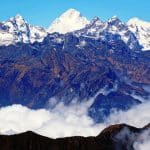 Sunday, July 21st, 2024
Sunday, July 21st, 2024
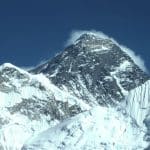 Thursday, June 27th, 2024
Thursday, June 27th, 2024
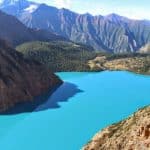 Wednesday, June 26th, 2024
Wednesday, June 26th, 2024
 Wednesday, June 12th, 2024
Wednesday, June 12th, 2024
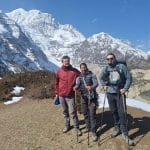 Monday, June 10th, 2024
Monday, June 10th, 2024
 Monday, June 10th, 2024
Monday, June 10th, 2024
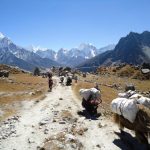 Wednesday, March 27th, 2024
Wednesday, March 27th, 2024
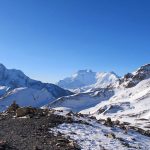 Friday, March 22nd, 2024
Friday, March 22nd, 2024
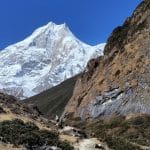 Sunday, February 4th, 2024
Sunday, February 4th, 2024
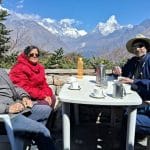 Monday, April 22nd, 2024
Monday, April 22nd, 2024
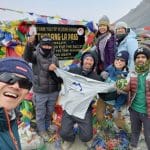 Thursday, May 9th, 2024
Thursday, May 9th, 2024
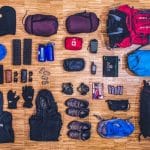 Wednesday, March 6th, 2024
Wednesday, March 6th, 2024
